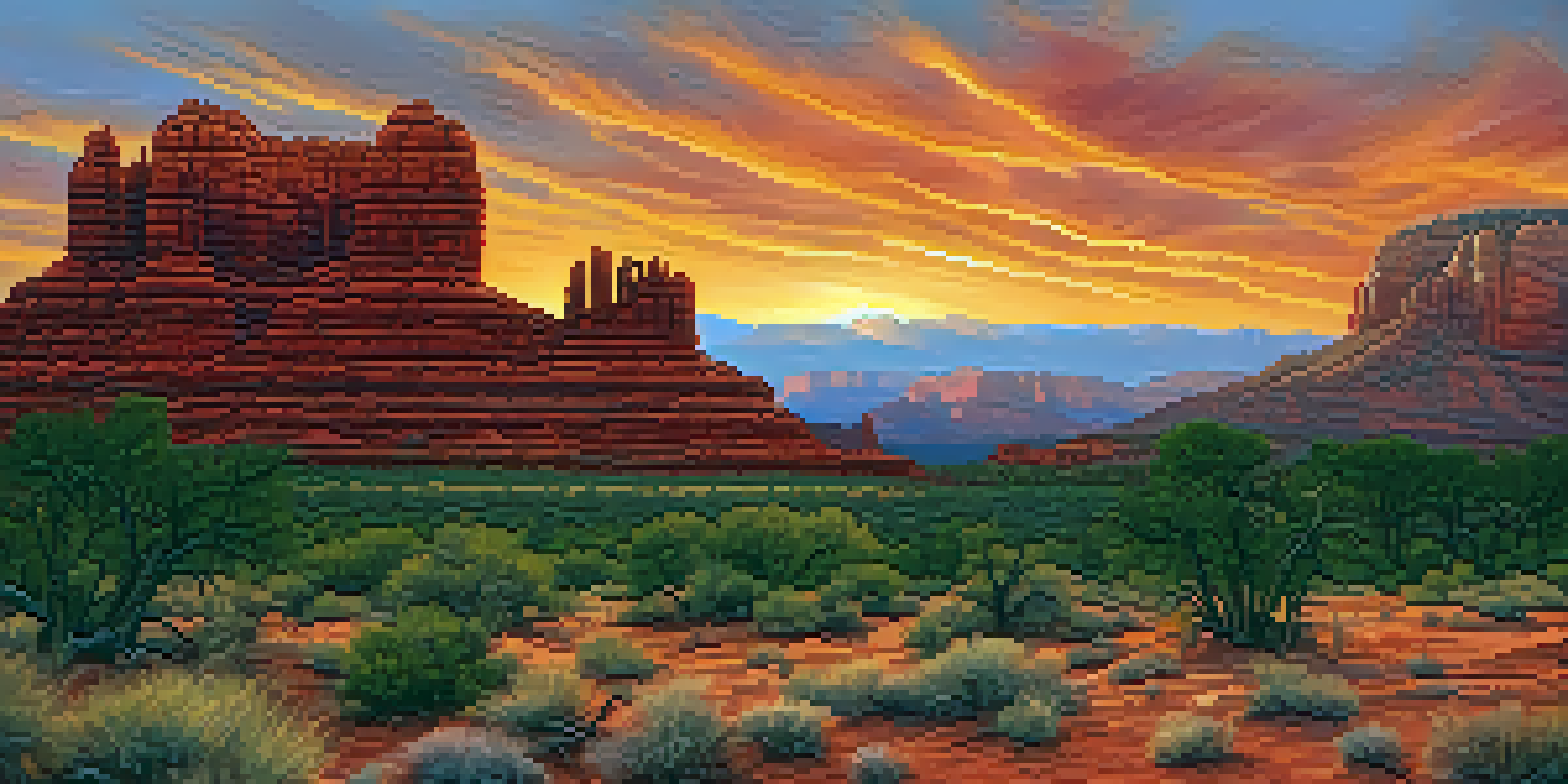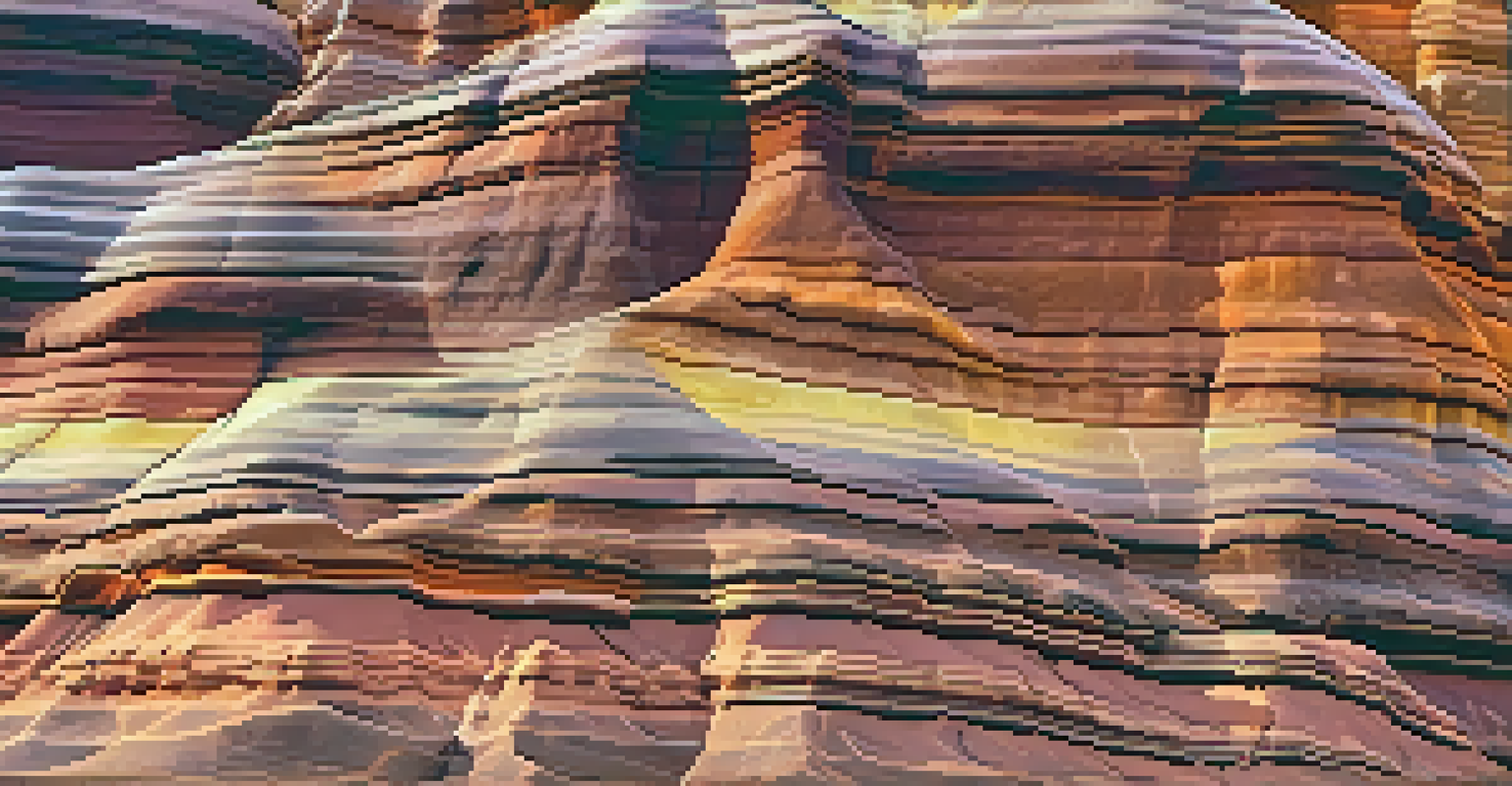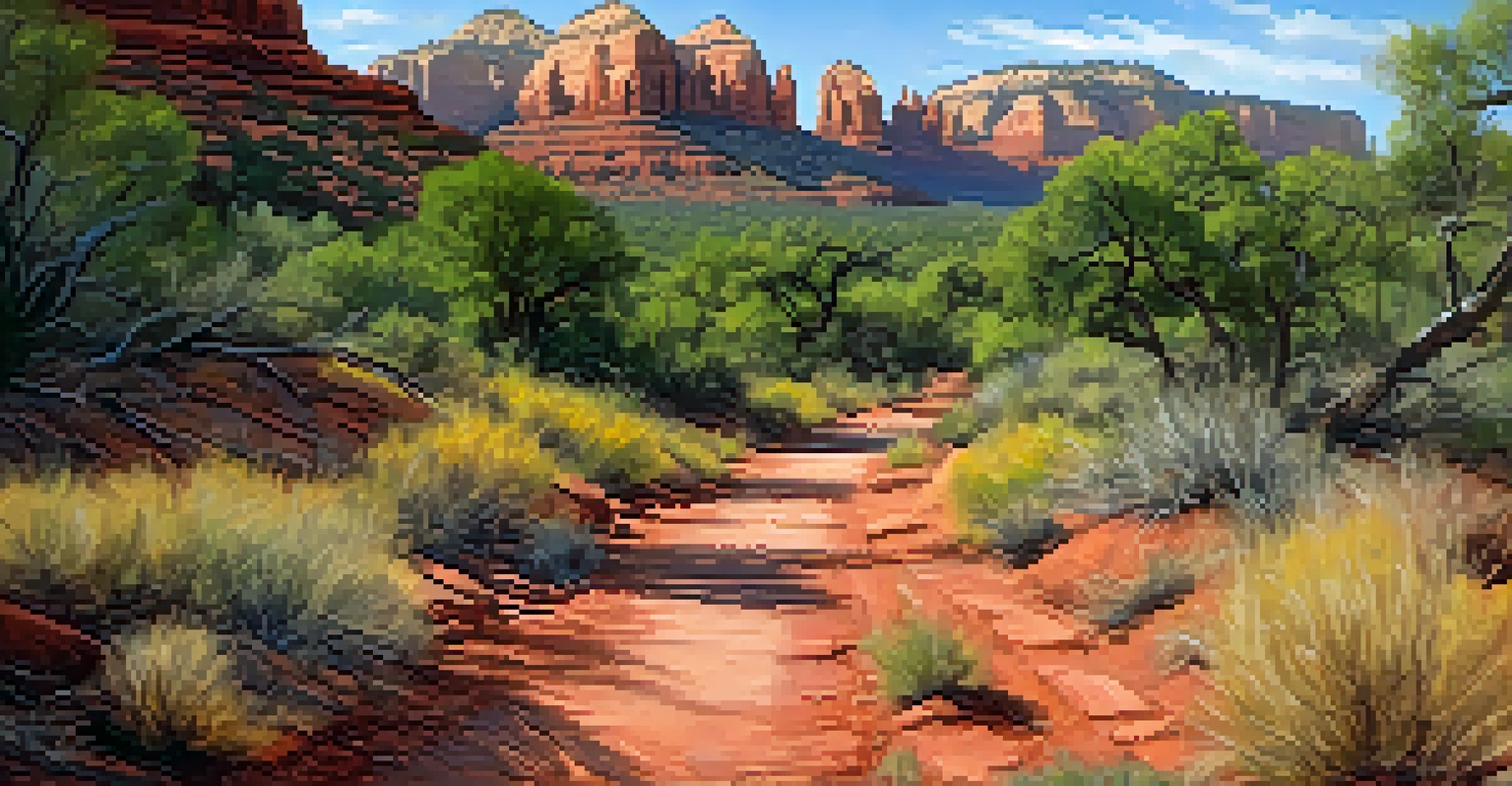The Formation of Sedona's Iconic Buttes and Mesas

Understanding Sedona's Unique Landscape
Sedona, Arizona, is renowned for its breathtaking red rock formations, which are a testament to millions of years of geological processes. The buttes and mesas that define this landscape are not just visually stunning; they tell a story of Earth’s history. These natural structures are formed through a combination of erosion, sedimentation, and volcanic activity.
Nature is not a place to visit. It is home.
To put it simply, a butte is a steep, flat-topped hill, while a mesa is a larger version of a butte. Both are formed when layers of rock are eroded, leaving behind these striking formations. The vibrant red color of the rocks comes from iron oxide, giving Sedona its iconic look that attracts visitors from all over the world.
Understanding the formation of these structures helps us appreciate their beauty even more. Each butte and mesa has its own character and history, shaped by the elements over time. This geological narrative is a key reason why Sedona is often described as a spiritual and healing place.
The Role of Erosion in Shaping the Landscape
Erosion plays a crucial role in sculpting Sedona's buttes and mesas. Over time, wind, rain, and temperature changes work together to wear away softer layers of rock, leaving behind the harder, more resistant layers. This process is akin to a sculptor chiseling away at a block of marble to reveal a masterpiece beneath the surface.

The unique sandstone and limestone layers found in Sedona are particularly susceptible to erosion, which creates the distinctive cliffs and rock formations we see today. Rainwater seeps into the cracks of the rock, causing tiny fractures to expand and eventually break apart. This gradual wearing down of the landscape is what creates those stunning, flat-topped structures.
Sedona's Landscape: A Geological Story
Sedona's breathtaking buttes and mesas reveal millions of years of geological history shaped by erosion, volcanic activity, and climate.
Interestingly, the rate of erosion can vary depending on the rock type and environmental conditions. In Sedona, the interplay of these elements has resulted in the dramatic formations that stand as a testament to nature's artistry. Observing these changes over time offers a glimpse into the dynamic processes that shape our world.
The Impact of Volcanic Activity on Formation
Volcanic activity has also played a significant role in shaping Sedona’s landscape. Millions of years ago, volcanic eruptions deposited ash and lava, contributing to the layers of rock that would eventually form the buttes and mesas. These volcanic materials are often mixed with sediment, creating a rich tapestry of geological history.
The Earth has music for those who listen.
One notable example is the nearby San Francisco Peaks, which are remnants of a once-active volcano. The eruptions helped lay down the foundational layers of rock that now support the iconic formations of Sedona. This volcanic influence is a key factor in the region's unique geology.
As erosion continues to wear away the landscape, remnants of this volcanic activity become visible, further enhancing the beauty of the buttes and mesas. The combination of volcanic and erosive processes creates a dynamic environment that continues to evolve, captivating those who visit.
Sedona's Colorful Rock Layers and Their Significance
The vibrant colors of Sedona’s rock layers, ranging from deep reds to bright oranges, are not just for show; they tell a story of the Earth's past. Each layer represents a different period in geological history, revealing information about the environment at the time of its formation. This colorful palette is a result of various minerals within the rock, primarily iron oxide.
These color variations can be likened to pages in a history book, each layer offering insight into ancient climates, flora, and fauna. For instance, the deeper the layer, the older the rock, often indicating a different era of sediment deposition. This stratification can give geologists clues about the Earth's evolution.
Cultural Significance of the Formations
The buttes and mesas hold deep spiritual and cultural significance for Native American tribes, attracting visitors seeking connection and healing.
Moreover, the vibrant hues have made Sedona a popular destination for photographers and nature lovers alike. The interplay of light and shadow on these colorful formations creates a breathtaking visual experience, making it easy to see why Sedona is often referred to as a photographer's paradise.
The Influence of Climate on Erosion and Formation
The climate in Sedona significantly influences the rate of erosion and the formation of its buttes and mesas. With a semi-arid climate, the region experiences distinct wet and dry seasons, which can affect how quickly the landscape changes. During rainy periods, the increased water flow accelerates erosion, while dry spells can lead to the drying out of cracks in the rock.
Temperature fluctuations also play a role in this process. When temperatures drop at night, the rock can contract, and when it heats up during the day, it expands. This constant cycle can lead to the gradual fracturing of the rock, contributing to the erosion that shapes the buttes and mesas over time.
Understanding these climatic impacts helps us appreciate the delicate balance that exists in Sedona's ecosystem. It’s a reminder of how interconnected natural processes are, and how they work together to create the stunning scenery we enjoy today.
Cultural and Spiritual Significance of the Buttes and Mesas
Beyond their geological wonder, Sedona’s buttes and mesas hold deep cultural and spiritual significance for many. Native American tribes have long regarded these formations as sacred sites, believing they are imbued with spiritual energy. This connection to the land adds another layer of meaning to these already awe-inspiring structures.
Visitors often share experiences of feeling a unique energy when near these formations, which has led to Sedona being dubbed a ‘spiritual vortex’ destination. The serene environment and stunning views promote reflection and healing, attracting those seeking solace or inspiration.
Preserving Natural Wonders for Future
Conservation efforts are crucial to protect Sedona's unique geological formations from the pressures of increasing tourism.
The intersection of nature and spirituality in Sedona invites us to explore our own connections to the environment. Whether through hiking, meditation, or simply soaking in the views, the buttes and mesas offer a space for personal growth and connection to the Earth.
Preserving Sedona's Geological Marvels for Future Generations
As we marvel at the beauty of Sedona’s buttes and mesas, it’s important to consider their preservation for future generations. Increasing tourism can put pressure on these delicate formations, making conservation efforts vital. Local organizations and park services are actively working to protect these irreplaceable natural wonders.
Education plays a key role in these efforts, as visitors learn about the geological processes that created these structures. By fostering a sense of respect and stewardship, we can ensure that Sedona’s landscape remains unspoiled. Simple actions, like staying on marked trails and minimizing waste, can make a significant difference.

Ultimately, protecting Sedona’s iconic formations is not just about preserving beauty; it’s about safeguarding a vital piece of our planet’s history. By understanding their significance, we can all contribute to the ongoing story of Sedona, ensuring its legacy endures for generations to come.